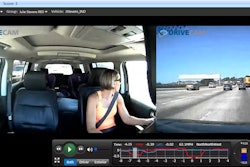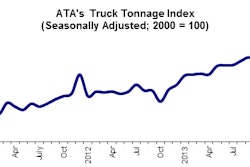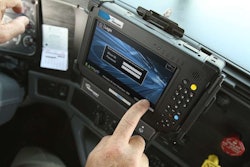Carriers in California can use footage from in-cab driver-filming cameras for disciplinary purposes, the state’s attorney general concluded in a Feb. 13-released opinion, saying trucking companies have not violated any of the state’s codes by using the data to take action against a driver.
Attorney General Kamala Harris’ opinion deals with companies contracted by carriers to provide the footage, and she stated carriers can use the third-party services to film drivers and inspect the video.
These third-party inspectors use front-facing and driver-facing cameras to film in a continuous loop until a trigger event, like hard braking or swerving make them start recording. The state’s code, Harris said, allows carriers to store no more than 30 seconds before and after a triggering event.
If a carrier uses the video for disciplinary purposes against a driver, the recording must be available to the driver or the driver’s bargaining representative.
State Sen. Jerry Hill asked Harris for the opinion due to concern over the potential for the recordings to violate a 1929 statute prohibiting blacklisting.
Last spring, the Federal Motor Carrier Safety Administration granted a two-year extension of an exemption allowing these recorders to be attached to truck windshields.
The exemption had been requested by Lytx, formerly DriveCam, a leading provider driver safety and compliance systems.
In 2012, California lawmakers amended state code to allow attachments to windshields or rear mirrors. The exemption allows a “video event recorder with the capability of monitoring driver performance to improve driver safety.”
Click here to see more information on California law regarding recorders and data from California’s Department of Motor Vehicles.
CCJ Technology Editor Aaron Huff published in October an in-depth report on in-cab driver filming and the industry’s adoption of it as a training mechanism. Click here to read it.










